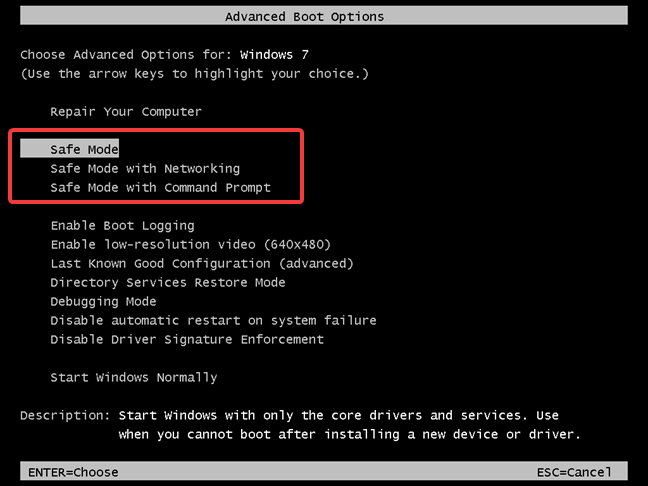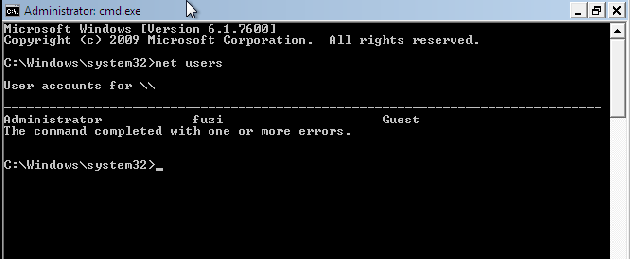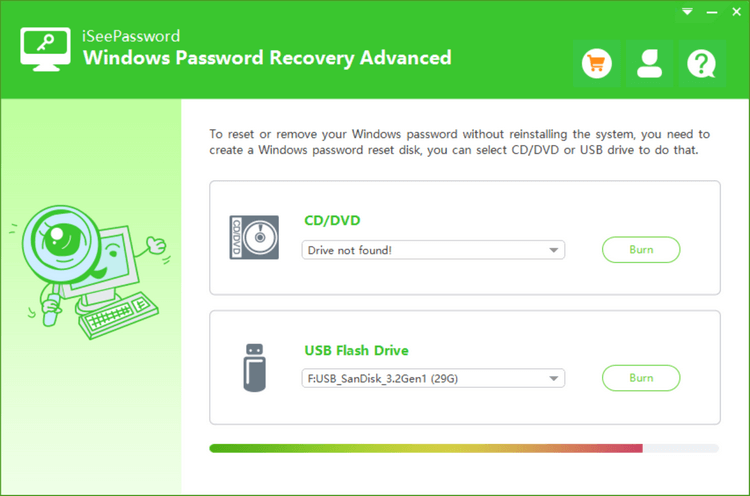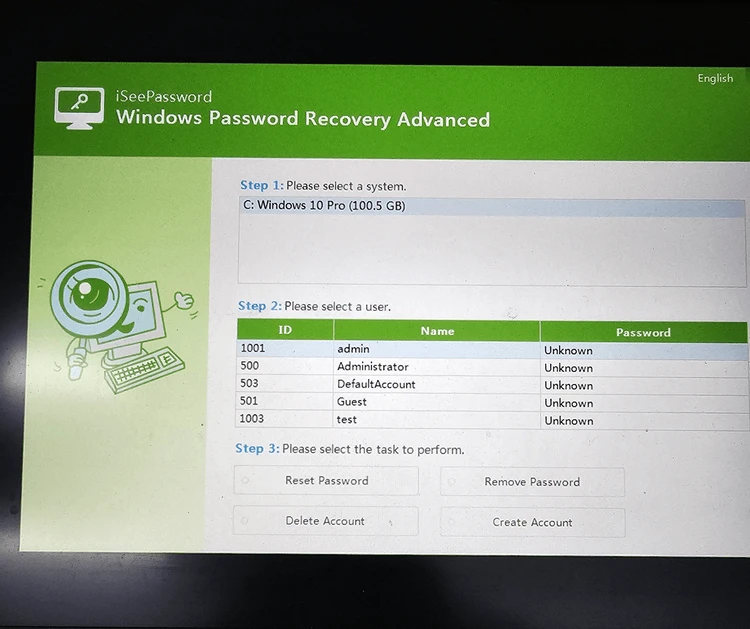Table of Contents
Bypassing the Windows 10 password in Safe Mode can be a useful skill to have in certain scenarios. Whether you’ve forgotten your password and can’t access your computer or you’re troubleshooting a system issue, being able to bypass the password in Safe Mode can provide a solution. In this blog post, we will explore the challenge of bypassing Windows 10 password in Safe Mode, the things you should prepare for, and methods to achieve this. We will also discuss alternative options and provide some bonus tips to help you along the way.
The Challenge of Bypassing Windows 10 Password In Safe Mode
- Forgot your password: One of the most common scenarios for needing to bypass the Windows 10 password is when you have forgotten it. This can happen if you haven’t used your computer for a while or if you recently changed it and can’t remember the new one.
- Troubleshooting system issues: In some cases, your computer may encounter system issues that prevent you from accessing your account. Booting Windows 10 in Safe Mode allows you to bypass certain startup programs and drivers, which can help in diagnosing and resolving these issues.
- Lost access to administrator account: If you have lost access to your administrator account or don’t have the necessary credentials to log in, bypassing the Windows 10 password in Safe Mode can be a viable option.
Things You Should Prepare for
Before attempting to bypass the Windows 10 password in Safe Mode, there are a few things you should prepare to ensure a smooth process.
How to Bypass Windows 10 Password In Safe Mode
Bypassing the Windows 10 password in Safe Mode can be accomplished using various methods. One effective method is using the Command Prompt utility. Here’s a step-by-step guide on how to do it:
Command Prompt is a powerful command-line tool in Windows that allows you to execute various commands and perform administrative tasks. Here’s how you can use Command Prompt to bypass the Windows 10 password in Safe Mode:
1. Restart your computer and boot into Safe Mode. You can do this by pressing the F8 key repeatedly during the boot process until you see the Advanced Boot Options menu. From there, select Safe Mode and press Enter.
2. When your computer finishes booting into Safe Mode, you’ll be presented with the Windows login screen. Click on the Administrator account to select it.
3. On the login screen, press the Windows key + R to open the Run dialog box. Type "cmd" (without quotes) and press Enter to open the Command Prompt.

4. In Command Prompt, type "net user [username] [new_password]" (replace [username] with the target username and [new_password] with the desired new password) and press Enter. This command will change the password for the specified user account.

5. After executing the command, you should see a success message indicating that the password has been changed.
6. Close the Command Prompt and restart your computer. You should now be able to log in to the target user account using the new password.
Pros:
– Using Command Prompt is a built-in solution that doesn’t require any third-party software.
– It is relatively simple and doesn’t involve complex procedures.
– This method can be used even if you don’t have administrative privileges on the target account.
Cons:
– This method requires access to the Administrator account in Safe Mode.
– Changing the password in this way may not work if the target account is linked to a Microsoft account. In such cases, you may need to use alternative methods or contact Microsoft support for assistance.
Alternatives: What to Do If You Can’t Bypass the Windows 10 Password In Safe Mode
If you encounter difficulties or are unable to bypass the Windows 10 password in Safe Mode, there are alternative options to consider. Here are a few alternatives you can try:
– Use password reset tools: Various third-party password reset tools are available that can help you bypass the Windows 10 password. These tools often use bootable USB drives or CDs to initiate the password reset process. Like iSeePassword Windows Password Recovery.

As you can see, it provides 4 options: reset password, remove password, delete account and create new account.

You can download trial here:
Video Tutorial:
– Contact Microsoft support: If you are unable to bypass the Windows 10 password using any method, it may be necessary to contact Microsoft support for further assistance. They can guide you through the process or provide additional solutions based on your specific situation.
– Reinstall Windows 10: As a last resort, you can consider reinstalling Windows 10. This will remove all data and settings from your computer, including the password. Note that this method should only be used if you have no other options available, as it will result in the loss of all data on your computer.
Bonus Tips
Here are a few bonus tips to keep in mind when bypassing the Windows 10 password in Safe Mode:
1. Create a password reset disk: Before encountering any password issues, it’s a good practice to create a password reset disk for your account. This disk can be used to reset your password in case you forget it in the future.
2. Use a strong password: When setting a new password, make sure to use a strong and unique combination of letters, numbers, and special characters. This will help protect your account from unauthorized access.
3. Regularly update your password: It’s recommended to change your password periodically to enhance security and minimize the risk of password-related issues.
5 FAQs about Bypassing Windows 10 Password In Safe Mode
Q1: What if I don’t have access to the Administrator account in Safe Mode?
A: If you don’t have access to the Administrator account in Safe Mode, you can try using password reset tools or contact Microsoft support for further assistance.
Q2: Is it possible to bypass the Windows 10 password without using Safe Mode?
A: Yes, there are alternative methods to bypass the Windows 10 password without using Safe Mode, such as password reset tools or contacting Microsoft support.
Q3: Will bypassing the Windows 10 password cause any data loss?
A: Bypassing the Windows 10 password itself should not cause any data loss. However, it’s important to note that if you choose to reinstall Windows 10 as a last resort, all data and settings on your computer will be erased.
Q4: Can I use the Command Prompt method to bypass the password for any user account?
A: Yes, the Command Prompt method can be used to bypass the password for any user account, as long as you have access to the Administrator account in Safe Mode.
Q5: Are there any risks involved in bypassing the Windows 10 password in Safe Mode?
A: Bypassing the Windows 10 password in Safe Mode itself does not pose any risks. However, it’s important to ensure that the computer is used responsibly and that the password is reset to maintain the security of the account.
In Conclusion
Bypassing the Windows 10 password in Safe Mode can be a valuable skill in certain situations. Whether you’ve forgotten your password or need to troubleshoot system issues, having the ability to bypass the password can provide a solution. While the Command Prompt method outlined in this blog post is an effective way to achieve this, there are alternative options available if you encounter difficulties. Remember to use these methods responsibly and take steps to enhance the security of your account to prevent future password-related issues.
